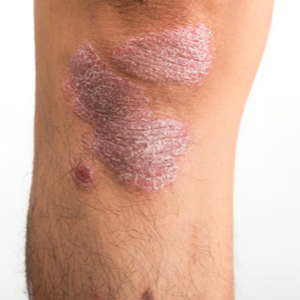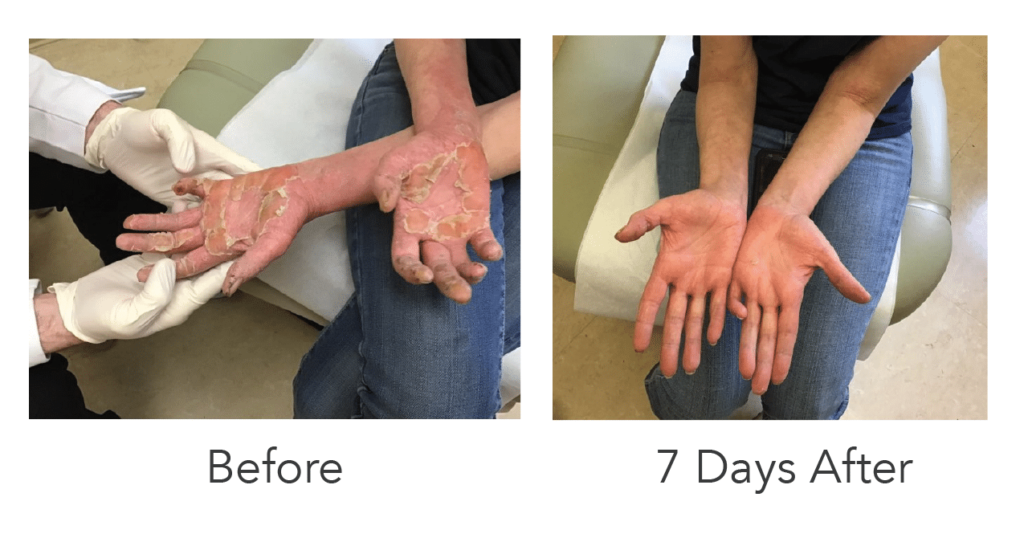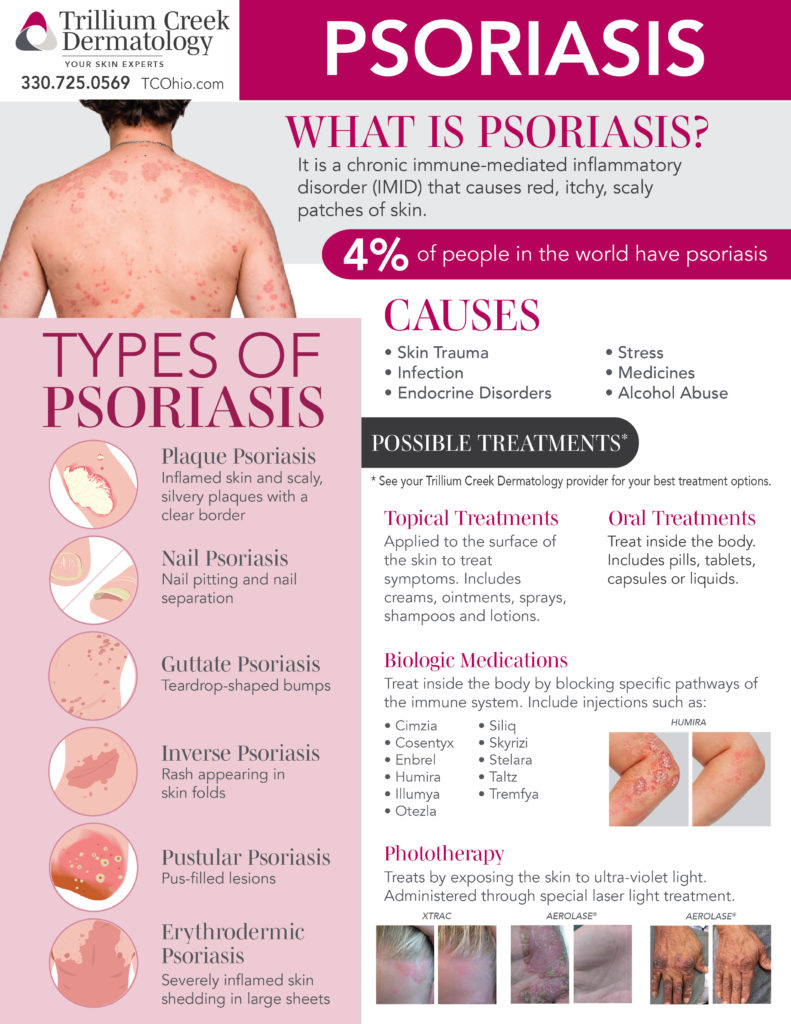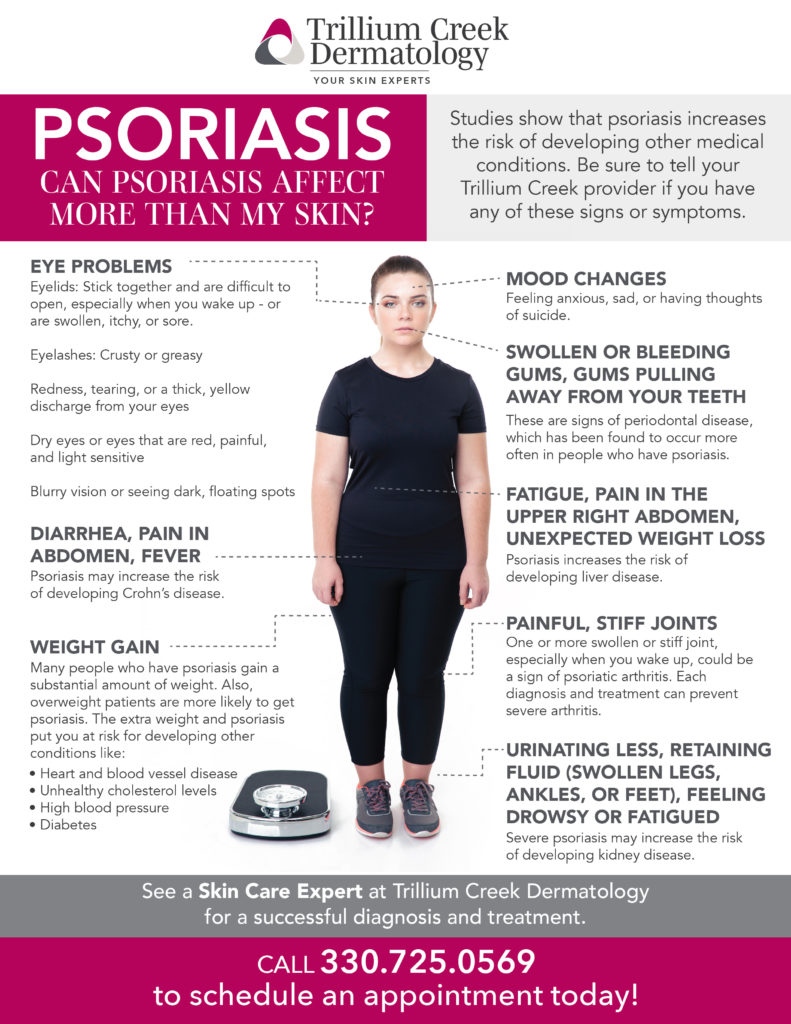Quick Links
The most common skin condition referred to by Dermatologists worldwide is Psoriasis, affecting the lives of around two percent of the population in the USA alone. The condition has a strong genetic link, but the appearance and severity can also be tied to environmental factors such as infection or trauma. Stress will not directly cause your psoriasis, but it can make it worse.
Appearing as red, raised, scaly skin patches on men and women of all ages, psoriasis can be both itchy and painful. It isn’t contagious, but for many people, it can be embarrassing and severely damage confidence in social situations.
Outbreaks of psoriasis typically appear in a symmetrical pattern on the scalp and lower back, and also on the elbows and knees, but can readily appear on other areas of skin too. Sometimes it will focus on your nails, behind your ears, or around the hairline.
Causes of Psoriasis
Psoriasis occurs because areas of your skin are producing new cells at a faster rate than normal. This is what causes these areas to have a dry and scaly appearance. There is also an increase in the amount of blood reaching the affected area, which is why your skin can look red and inflamed. A similar process can occur in the joints and cause pain, swelling and stiffness. This is known as psoriatic arthritis.
Types of Psoriasis
The most common form that we see in adults is plaque psoriasis. You may hear dermatologists refer to it by its Latin name of Psoriasis Vulgaris. This might sound sinister or even a little rude, but it isn’t – Vulgaris simply means “common”!
Children can also be affected by psoriasis. One of the most common types is called psoriasis guttate. It can appear quite suddenly and be a worry for both the child and their parents. The condition can be treated and does not necessarily mean that your child will have long-term bouts of psoriasis in later life.
There are several other types of psoriasis and they respond in different ways to various programs of treatment. Here at Trillium Creek Dermatology, we will be able to determine what type of psoriasis you have and optimize your treatment to ensure the best results.

Without a professional consultation, it is often difficult to differentiate between psoriasis and eczema (or atopic dermatitis). If your red, itchy rash does not show the classic sign of dead skin cells that make the skin look scaly, then it is most probably eczema. You can read more about it here.
Psoriasis in babies does occasionally occur, however, eczema is the more common condition in infants.
Patient Results

Treatment for Psoriasis
A wide array of psoriasis treatment options are available that can usually reduce and alleviate the symptoms of pain, itching, redness, and flakiness of your skin.
Treatment plans will vary from patient to patient. Your Trillium Creek Dermatology skin experts will formulate a multi-faceted treatment plan specifically for you depending on the type, severity, and symptoms underlying your condition.
Treatment options include:
- Topical lotions and medicated ointments which can be applied directly to the affected area
- Medicated shampoo which can be beneficial for psoriasis of the scalp around the hairline
- Carefully-controlled exposure to ultraviolet light at levels tailored to your conditions
- Aerolase light therapy, where a focused laser light gently targets specific skin structures without damaging the surrounding skin
- Medication, including specialized drugs to help control the causes of your increased skin cell production
Our experts will also look at the causes of your psoriasis and investigate possible triggers that aggravate your condition, including lifestyle, diet, and medical history. By doing this, they will be able to help plan the ongoing management of your condition. We are serving the following communities and those surrounding: Wooster, Wadsworth, Medina, Brunswick, Strongsville, and Hinkley.





